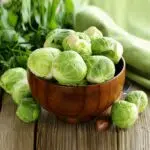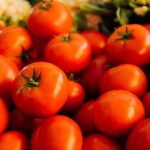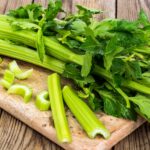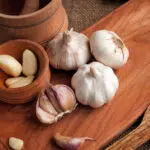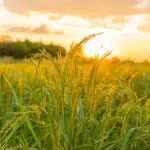National Garlic Month is celebrated in April. Garlic transcends cultures. It can be found in Asian, American, African, and European cuisines. Garlic was almost always used as more than just a herb or spice to add flavor to meals. Some civilizations used it for medicinal purposes, while others elevated it to a higher spiritual status in their society. It’s fascinating to see how many civilizations used garlic for the same or similar purposes that had no direct contact with each other. Garlic was known to early man to be a healthy and versatile crop with far more applications than just seasoning dishes.
History of National Garlic Month
Garlic is widely assumed to have originated in Central Asia, somewhere near China. Around 2,000 years ago, the ancient Chinese used garlic for medicinal purposes, believing that it could cure a variety of ailments. It spread from China to neighboring Japan and Korea. Garlic was also used medicinally by the ancient Indians, who ground the plant into a paste and made a tonic out of it. This tonic was used to treat skin diseases, loss of appetite, rheumatism, hemorrhoids, and many other ailments. Because Indian priests were some of their society’s first doctors and pharmacists, these garlic treatments were accompanied by elaborate rituals, spells, and prayer ceremonies.
Garlic was thought to have life-giving properties by the ancient Egyptians, and its strong odor was thought to protect the pharaoh from evil spirits in the afterlife. Around 3200 B.C., it was introduced to Egypt via trade routes and traveling merchants. According to biblical accounts, Jewish slaves in Egypt were fed a garlic-rich diet to strengthen their bodies and make them more productive workers. The Talmud, a Jewish religious text, even recommended garlic consumption for the treatment of parasitic infections around the 2nd century A.D.
The Talmud went further to advise married couples to use garlic to aid in procreation. The Greeks shared the Egyptian belief in garlic’s performance-enhancing properties. Garlic was used to feed ancient Greek athletes, according to research findings. This was done to improve their athletic performance during Olympic competitions. Garlic is mostly used for cooking nowadays, but that doesn’t mean its numerous health benefits aren’t recognized. We now know that garlic is antimicrobial and antifungal, that it lowers the risk of heart attack, and that it contains allicin, a compound with numerous therapeutic properties.
National Garlic Month timeline
The ancient Chinese use garlic in many remedies, including for the treatment of depression.
Greek generals often fed their troops with garlic before major battles.
King Tutankhamun — the youngest of the pharaohs — is buried with garlic, symbolizing his soul’s patron and protector of his wealth in the afterlife.
Slavic people use garlic to repel lice, as well as a form of treatment for snake bites, spider bites, ulcers, and crusts.
National Garlic Month FAQs
Can you eat garlic leaves?
Yes, garlic leaves are best eaten raw to preserve their vibrant flavor.
Does garlic grow hair faster?
Garlic boosts the production of collagen, which helps stimulate hair growth.
Is there fat in garlic?
Garlic has no fat whatsoever, making it one of the healthiest foods out there.
National Garlic Month Activities
Try out some garlic recipes
Garlic is so versatile. You can use it for meat or plant-based dishes. Crush it, mince it, or blend it into a marinade and slather it over everything. Don’t be afraid to get creative.
Grow your garlic
Why not grow garlic for your personal use? You can plant three or four cloves in a small pot. Water them lightly and place them on a sunny window ledge. You should have some garlic greens ready for snipping within a week or so.
Attend a garlic festival
At a garlic festival, you can join others in celebrating this wonderful food. A renaissance fair, state fair, cookout, or harvest festival will almost certainly have one.
5 Great Facts About Garlic
China is the biggest garlic producer
According to a study from 2012, China grows two-thirds of the world’s garlic, adding up to around 46 billion pounds every year.
Its name has Anglo-Saxon origins
Although garlic originated from Asia, the name comes from the Anglo-Saxon words ‘gar’ (‘spear’) and ‘lac’ (‘plant’), possibly a reference to the shape of a garlic plant’s leaves.
Garlic juice can make glue
Juice extracted from garlic cloves is used as a bonding agent for D.I.Y. projects involving sensitive materials like glass.
Garlic was issued to soldiers in WW2
Garlic was given to soldiers during World War ll as a form of medicine.
Garlic is a vegetable
Though it's commonly used and referred to as a herb or spice, botanically, garlic is a root vegetable in the same family as onions.
Why We Love National Garlic Month
Garlic makes everything better
Imagine a world with no garlic bread. Or garlic butter. Or garlic fries. We can’t imagine it either.
Garlic is a superfood
It’s packed with vitamins and nutrients. It’s low in calories too. You get lots of flavor without compromising your health.
Garlic smells amazing
Not on your breath of course. But the smell of garlic in the air is just delightful, and you get a whole 30 days of it during National Garlic Month.
National Garlic Month dates
| Year | Date | Day |
|---|---|---|
| 2026 | April 1 | Wednesday |
| 2027 | April 1 | Thursday |
| 2028 | April 1 | Saturday |
| 2029 | April 1 | Sunday |
| 2030 | April 1 | Monday |












































